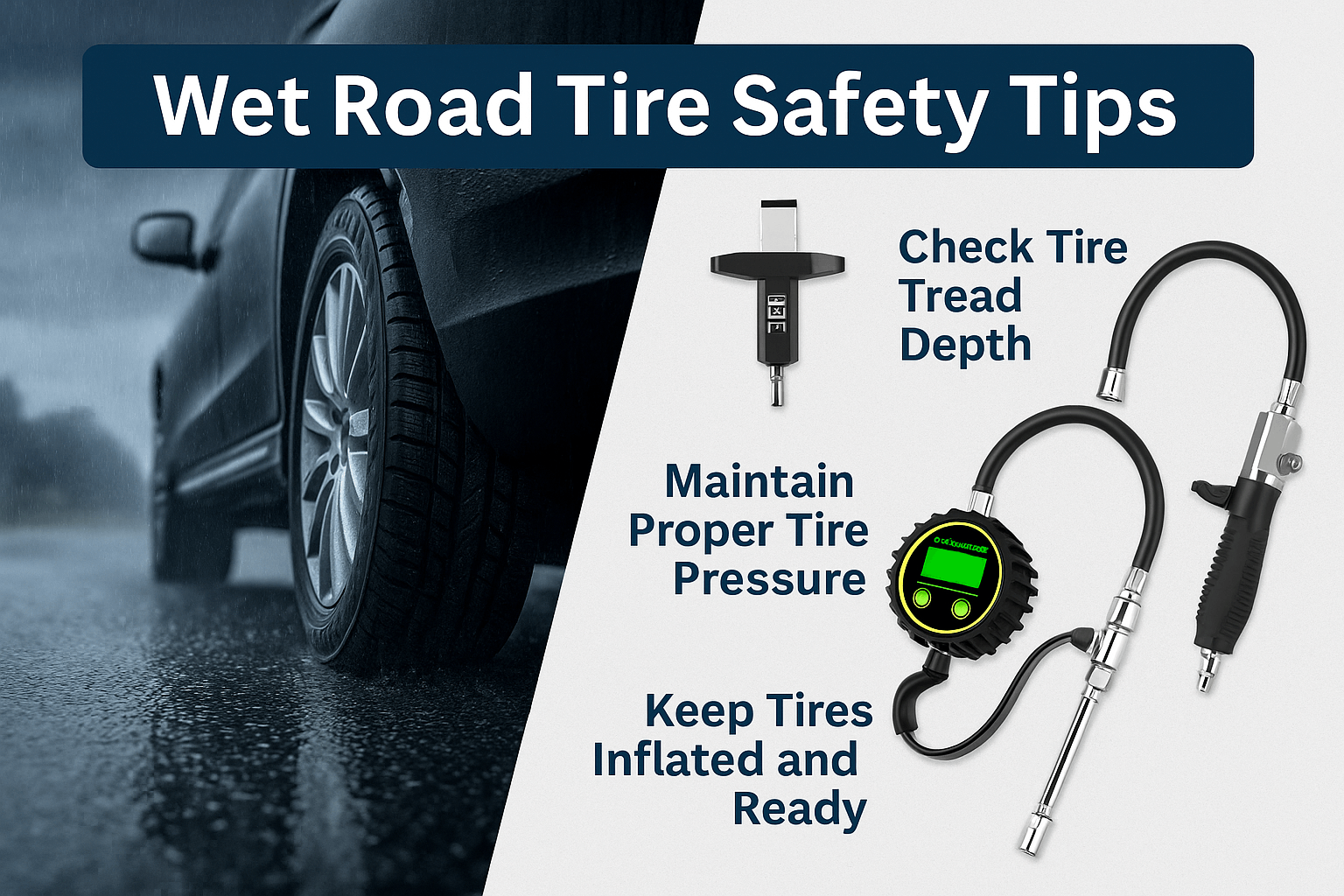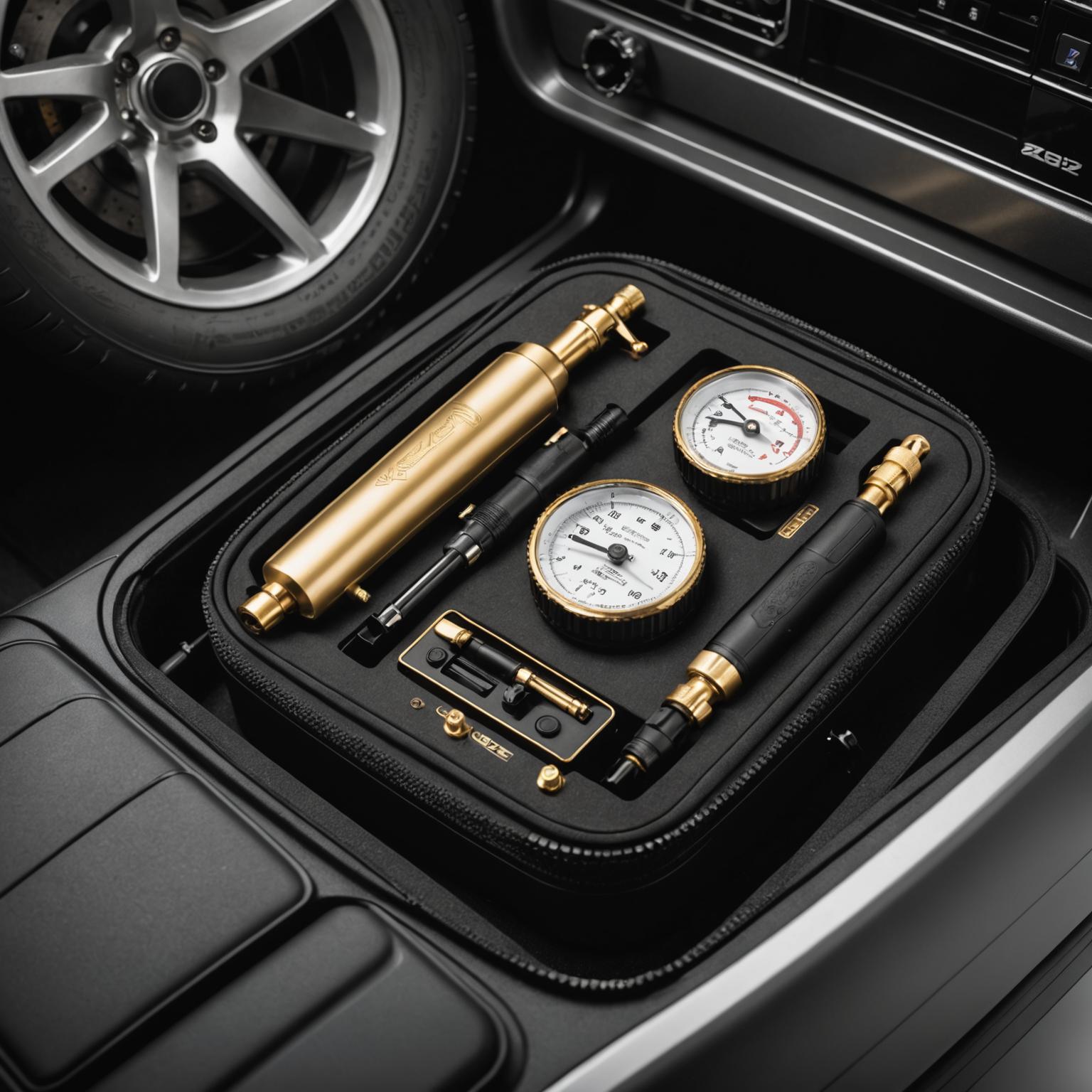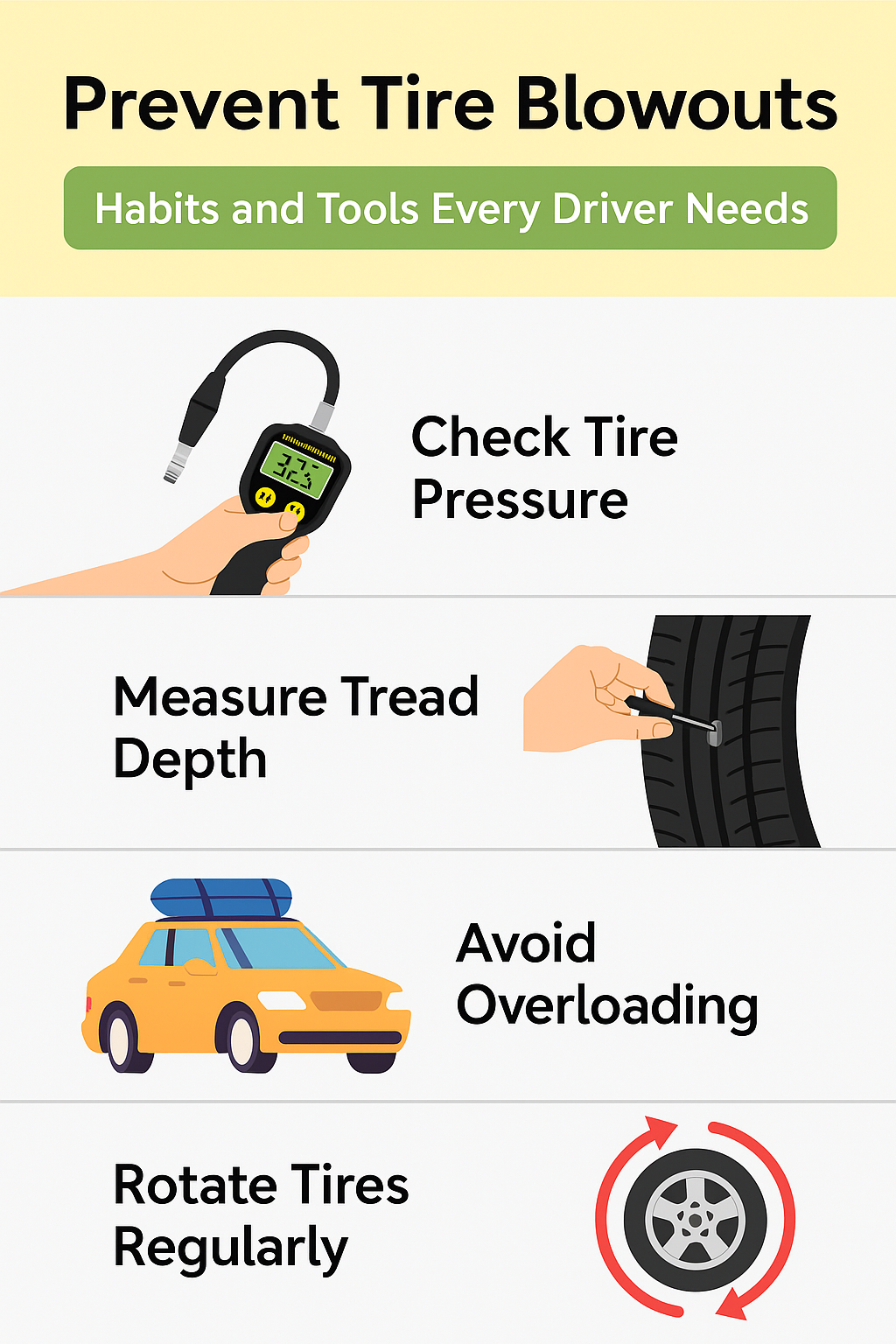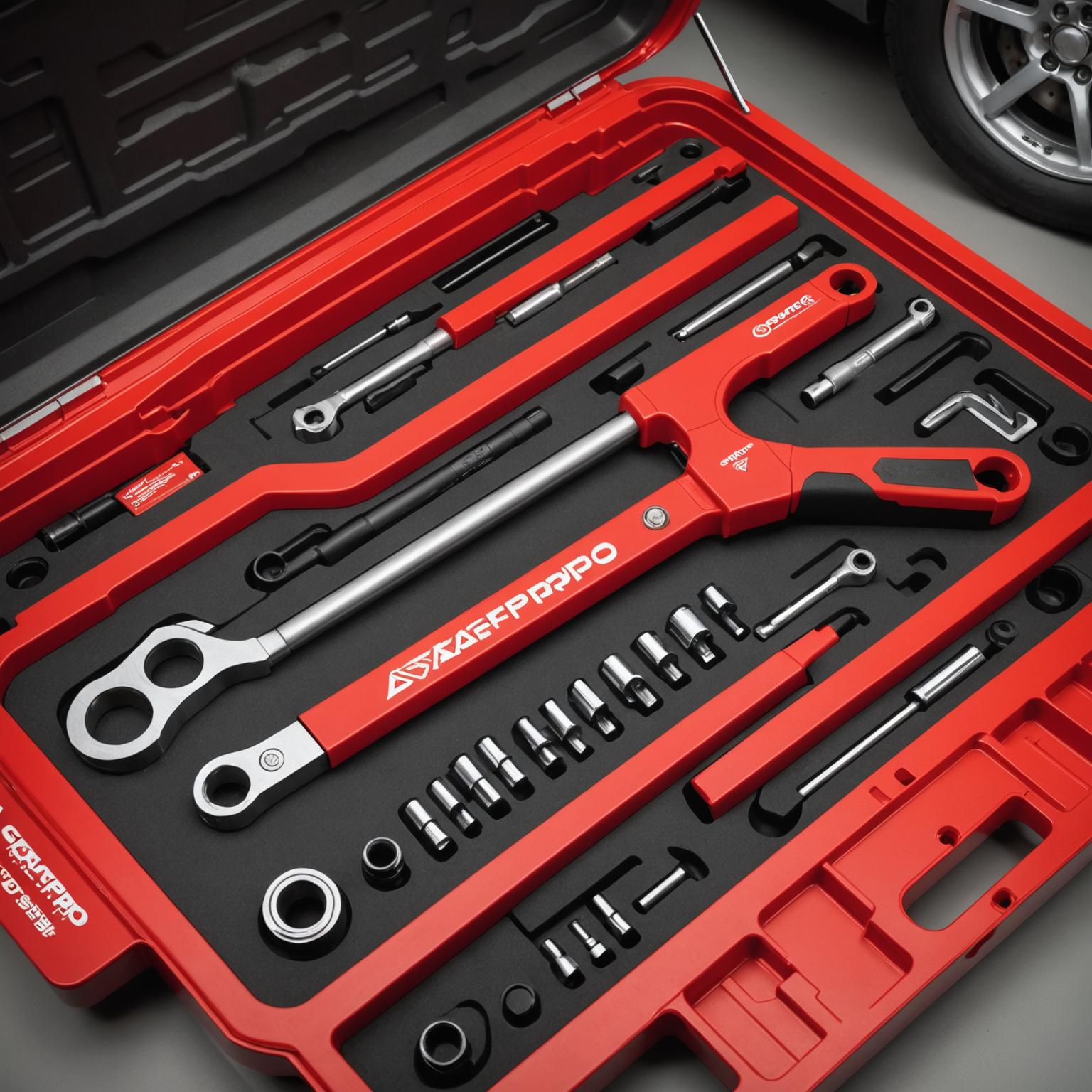
Rain and Traction: How to Keep Tires Reliable on Wet Roads
Why Wet Roads Are Especially Dangerous
Rain transforms familiar streets into unpredictable hazards. Water reduces tire traction, increases braking distance, and creates conditions where hydroplaning can occur. According to the National Safety Council, wet pavement is a leading contributor to weather-related crashes. The right preparation makes the difference between a safe commute and a near miss.
Pressure Checks That Prevent Trouble
When water covers the road, tire pressure becomes critical.
-
Low pressure makes tires flatten, trapping water and raising hydroplaning risk.
-
High pressure reduces grip, leaving less surface contact with the road.
For drivers who want a quick, no-battery solution, the ATSAFEPRO Pencil Tire Gauge is compact and reliable for daily use. For those who prefer traditional accuracy, a mechanical tire gauge gives precise readings that don’t depend on electronics. These simple tools help ensure PSI is always in the safe range.
Tread Depth: The Real Rain Shield
Tread grooves work by channeling water away from the tire’s contact patch. When tread becomes shallow, that safety system collapses. Drivers in rainy climates should maintain at least 4/32 inch of tread. Using an ATSAFEPRO tread depth gauge, you can measure exactly and avoid relying on visual guesses. By replacing tires on time, you greatly reduce the chance of skidding on wet pavement.
Habits That Keep You in Control
Beyond tire condition, your driving habits play an equal role:
-
Reduce speed in heavy rain to allow grooves to work effectively.
-
Avoid sudden steering or braking that can overwhelm traction.
-
Stay in the tracks of vehicles ahead to minimize water buildup.
-
Leave extra space for braking since wet roads extend stopping distance.
These small adjustments complement your tire care and create safer conditions in any rainstorm.
Everyday Scenarios Drivers Face
-
Morning Commute: Sudden showers on highways test both tire grip and driver reaction.
-
City Driving: Potholes fill with water, hiding hazards for worn tires.
-
Weekend Travel: Extra luggage increases load, making PSI accuracy even more important.
-
Countryside Roads: Narrow lanes and poor drainage mean tread depth becomes a decisive factor.
ATSAFEPRO Tools That Simplify Wet Road Checks
From compact pencil gauges to durable mechanical gauges and easy-to-use tread depth tools, ATSAFEPRO provides simple products designed for everyday drivers. These tools remove guesswork and make wet-weather preparation fast and effective.
Driving Safer in the Rain Starts Before You Leave Home
Wet road safety is not only about driving slower—it begins with tire preparation. With consistent pressure checks, timely tread inspections, and reliable tools like those from ATSAFEPRO, drivers can turn rainy conditions into manageable challenges rather than threats.
Explore ATSAFEPRO tire tools or connect via Contact Us to make wet road safety part of your driving routine.







